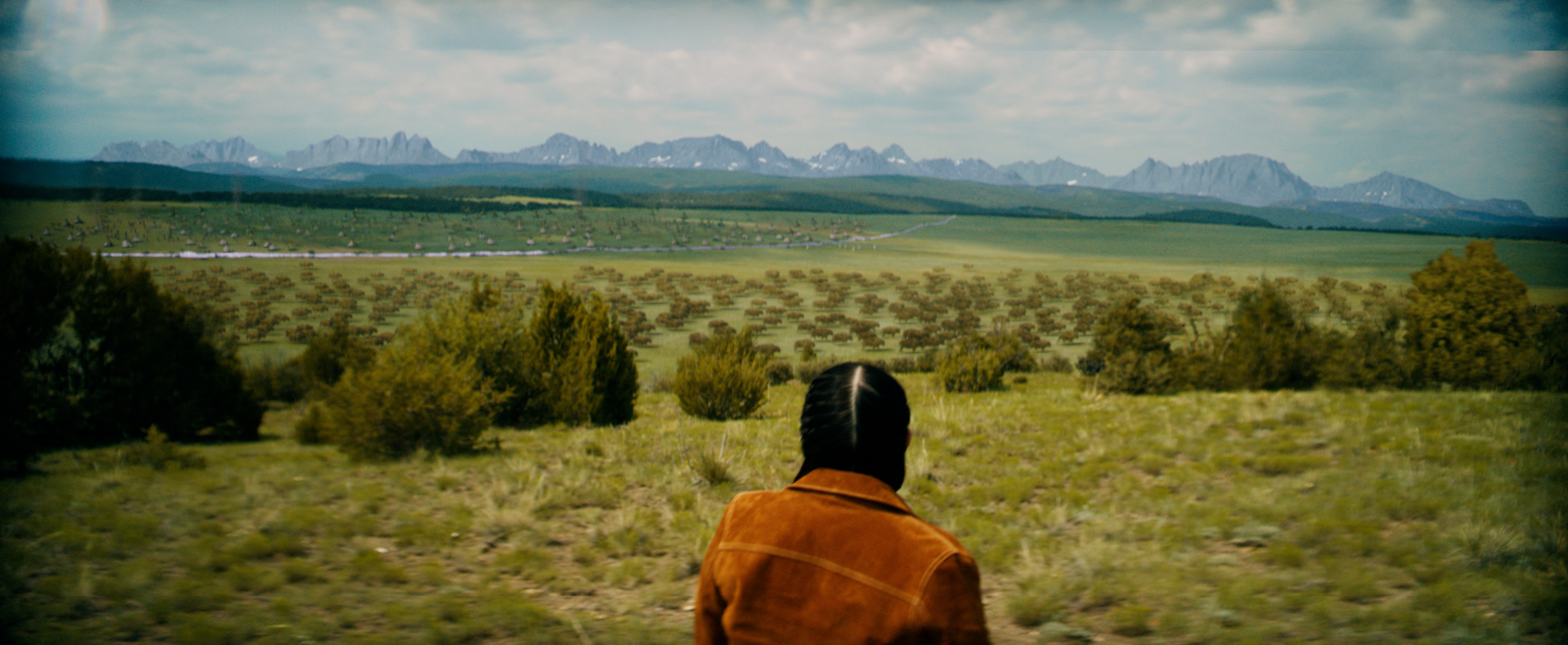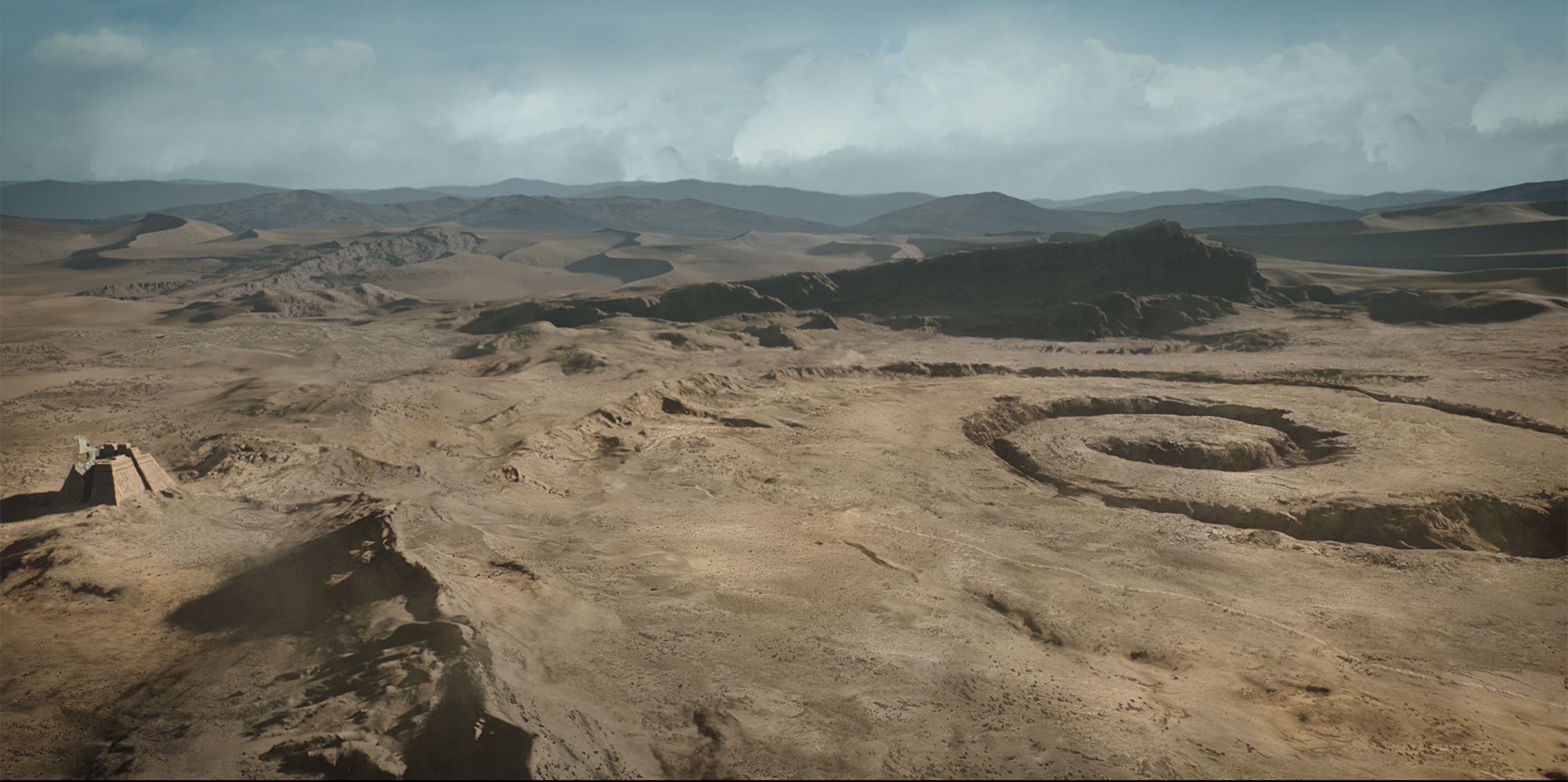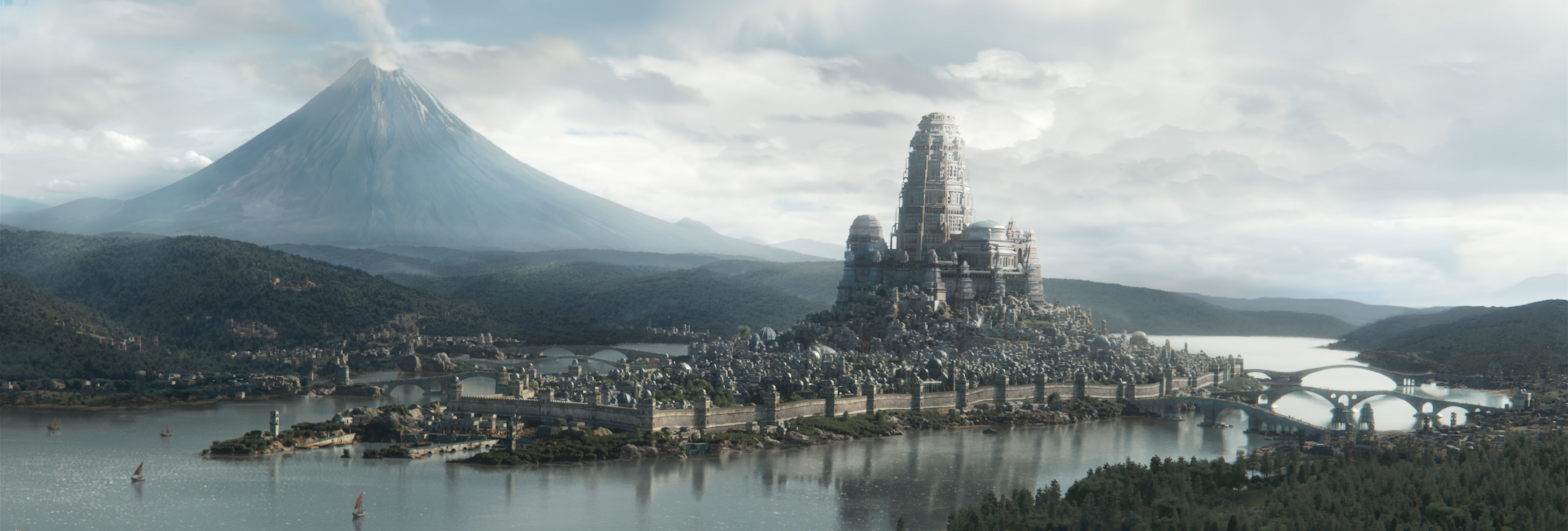Be the first to know — Get Outpost's monthly newsletter for news, tips and job opportunities.
Ideas
Star Trek Discovery S4: Creating Dead Planets and Programmable Matter
Learn how Outpost FX Artist, Mike Zhou, recreated some quintessential Star Trek VFX for season 4 of Discovery with this in-depth Q&A
This season sees more intergalactic sci-fi environments and futuristic FX that have become synonymous with Star Trek over the years (think cloaking device, beaming technology), so expect big things from the final six episodes of season 4.
For this project, Outpost’s creative team worked on complex FX sequences and a sprawling interstellar CG environment. We caught up with LA-based FX Artist, Mike Zhou, for a deeper dive into some of his work on episode 11 of season 4 (spoilers to follow).
You’ve been an FX Artist for seven years now. Is your work on Star Trek: Discovery season 4 similar to the work you’ve done previously?
Before now, I worked on the FX side for other sci-fi shows such as Foundation, Westworld and Star Trek: Picard, but not on anything quite like this in terms of the nature and the scope of the work, so it was new and exciting territory for me to explore.
A lot of Outpost’s FX work was centralised around episode nine where programmable matter engulfs a shuttle and destroys it. Can you tell us what’s going on here?
Captain Burnham sends her crew in a cloaking shuttle to secretly dock Book’s ship in an attempt to take control of it. However, when they reach the ship, Book’s defence mechanism automatically kicks in and launches a programmable matter attack on the shuttle. Book, not wanting to kill the crew, uses Electrical Magnetic Pulse in an attempt to slow or stop his programmable matter, letting the crew escape. In true Star Trek fashion, the team are beamed out of the shuttle just in time for the programmable matter to destroy it.

Can you talk a little bit about the overall creative process for the programmable matter in this sequence?
Colton Miller [CG Supervisor] and I sat down and looked at some of the previous uses of programmable matter in the show and started discussing what it can do, its behaviour and properties. It was really interesting to hear the possibilities and power of the programmable matter; that it can engulf entire cities and destroy everything in its path.
In the Star Trek world, programmable matter is an element that can turn into any other element that the system wants it to, and so I think of the attack as more of a virus from Book’s ship, trying to take over the shuttle by turning it into programmable matter that Book can then control.
On team, we had to think of methods to work on such a large simulation efficiently and still be flexible enough for art direction. In the end we managed to find ways to use bigger modules to control the smaller modules and convert it back and forth for optimisation so the simulation didn’t go beyond our resources.
When tasked with such a complex FX sequence, where do you begin?
For me personally, I like to get a good understanding of the context for the FX element as this helps me build a strong base for realism, gives me a good starting point and usually it helps me understand what methods will be needed in my approach.
For this particular sequence, I wanted to give the programmable matter a growth characteristic similar to poison, where it gradually works to overwhelm its host. It is coded to infect the shuttle on a molecular level and change it into programmable matter itself so that Book can control it.
Knowing this, I converted and mutated the existing material of the shuttle as the programmable matter tried to consume it – this is where we see the cubes forming along the shuttle’s surface.
Once we had the visual identity of the programmable matter where we wanted it, FX Artist Dan Chamberlin and I then had to think about Book’s EMP working to stop the programmable matter. We had conversations about what this would look like and how the two would interact with one another.
In the previous shots, the nanobots are spreading upwards over the shuttle to overwhelm it, so when we introduced the EMP, we created a wave-like pulsing motion that made the matter retreat slightly before continuing to grow.
With the pulse, Colton added some electric-blue lighting that charges across the programmable matter and then dies out with each surge. We tried a few iterations of this, playing around with the lighting and speed of the pulsing before we reached the final iteration where we felt the two elements were interacting well together.
With the shuttle breaking in two, we also added some additional cubes which came apart from the shuttle and moved outwards with the breaking motion. It was a real joint effort between all of us to get this look right, with [VFX Supervisor] Chris Faczek overseeing the project from start to finish.


You also worked on the dead planet that the Discovery crew explores. What process went into creating the FX for this asset?
I would say that this was actually more challenging than the programmable matter sequence as we had a lot more shots, from planetary wide views to close-ups. It was a real group effort on this asset to tackle it in an effective and timely manner.
For my part, I was tasked with procedurally generating the textures on the dead planet. The planet was once inhabited by another species but had since been destroyed by meteor strikes that burned away the planet’s gas layers. This meant there was some evidence of lava and debris which all had to be incorporated into my work.
To begin, I first studied the formation of lava on earth and how it looks when it cools down. After collecting enough reference, I started recreating the different parts of the planet individually. It was a long process to find the right combination of techniques and looks. I had to pay particular attention to the depth and surface of the planet and decide what areas should have smooth or rocky terrain and cooled lava.
I was given some great models from our layout artist Christopher Myers and modeller Hyeonyi O’Brien which meant I could procedurally scatter rocks and use height fields to create lava textures and random hot spots throughout the environment. This was important to map out because it gave the planet a red glow when the Discovery is travelling through the debris.
After procedurally scattering these elements, I then used COPs to create more layers and details to combine texture maps which are tileable. The blending of the different materials was done with DOP level masks on the planet. Textures, displacement maps, masks and models with modified UVs were then exported and rendered in Arnold by our lighters.
Watch Mike and the team’s FX work in motion in Star Trek: Discovery season 4, streaming on Paramount+ from Feb 10, 2022.
Read more on Outpost’s work on Discovery over on our dedicated work page.







